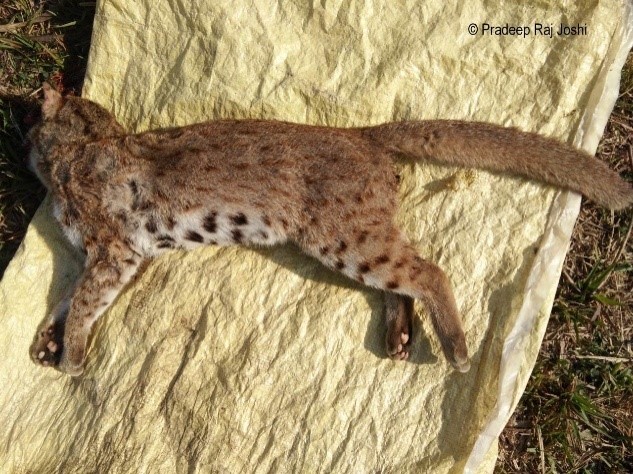Rusty-Spotted Cat Conservation initiatives in Western Terai Landscape, Nepal

Project Highlight
Principal Investigator: Dipendra Adhikari
Location: Shuklaphanta National Park, its buffer zone and adjoining forests in Sudoorpaschim Province.
Grant Support: Panthera’s Small Cat Action Fund
Team: …
Rusty-spotted cat (Prionailurus rubiginosus) is the smallest wild cat in the world. It is categorized as Vulnerable in IUCN Red List. Among 12 other wild cat species in Nepal; it is sympatric with large carnivores in both Protected and non-protected forests in Nepal’s Terai. This species in Nepal needs conservation and research attention. According to the IUCN Assessment information (2016), the current population is decreasing and there is no clear estimate of how many rusty-spotted cats are thriving in the wild. With support from Panthera’s the Small Cat Action Fund, this project will be implemented in Sudoorpaschim Province primarily on buffer zone community forest of Shuklaphanta National Park including national forest patches of Kanchanpur district. The project area lies at the far west plain of Nepal.
The project’s goal is to sensitize communities of buffer zone and people living in the edge of national forests to conserve Rusty spotted cat and their habitats. The key activities of the projects are:
- Biological monitoring of Rusty-spotted cat: recording indirect signs questionnaire survey, focus group discussion will be deployed across strategic locations and will be extensively surveyed in hotspot area.
- Threats identification: Threats include habitat loss and degradation, depletion of natural prey base, competition with other large carnivores such as tigers, leopards, and golden jackals.
- Conservation outreach: Interaction programs with local people, forest and park officials, Community Forest Users, journalists and security personnel about status, distribution, threats, and role of rusty spotted cat in

